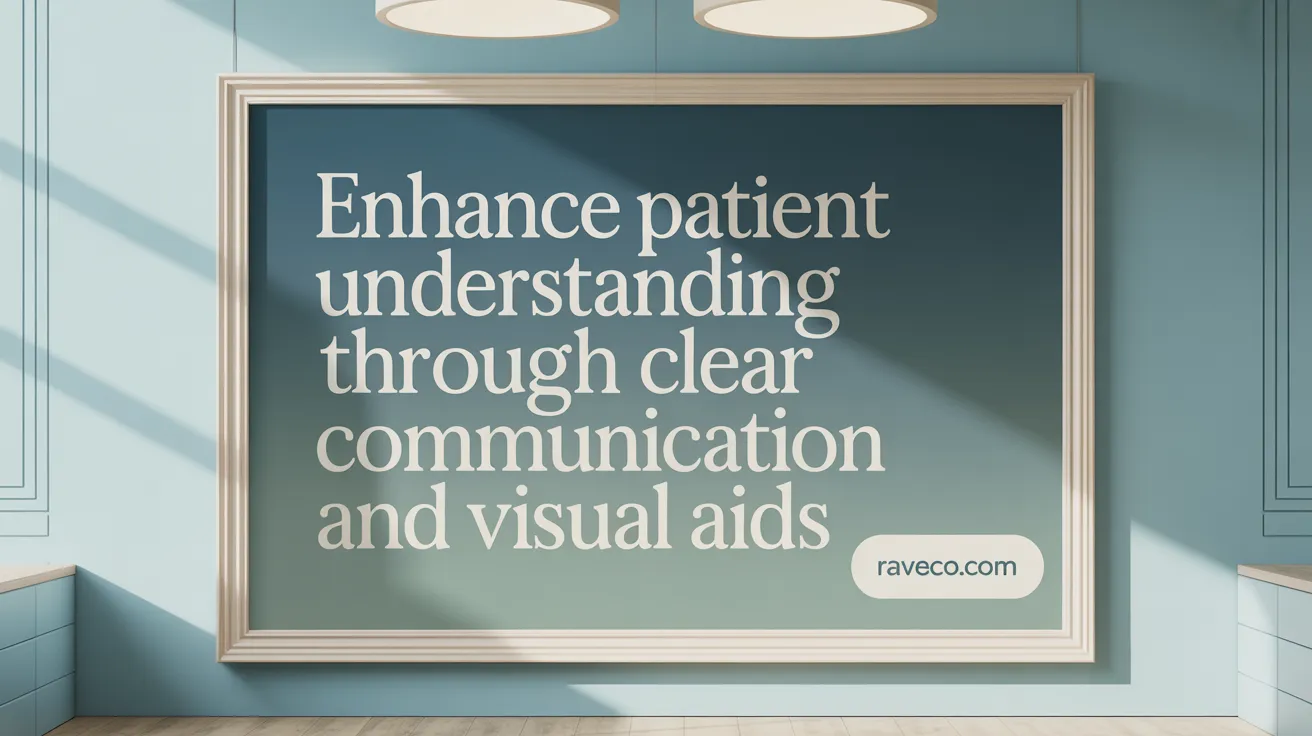How Genetic Counseling Shapes Informed Choices in Prenatal Care

Understanding the Importance of Informed Birth Control Choices
In a world abundant with contraceptive options, making an informed choice about birth control is essential to achieving reproductive goals and maintaining health and autonomy. Birth control counseling plays a pivotal role in guiding individuals through this complex decision-making process, ensuring they understand the benefits, risks, and practical considerations of available methods. Through patient-centered care and shared decision-making, contraceptive counseling empowers individuals to select methods that align with their personal values, lifestyle, and health needs, thereby promoting satisfaction and adherence.
Foundations of Effective Contraceptive Counseling

What is the role of counseling in informed contraceptive choice?
Contraceptive counseling is a collaborative process where healthcare providers offer clear, evidence-based contraceptive counseling information tailored to the individual's health history, lifestyle, and reproductive goals. It empowers people to make informed choices by discussing method effectiveness, side effects, and risks while respecting personal values and preferences.
How do relational and task-oriented communication contribute?
Effective counseling balances two types of communication:
- Relational communication: Builds trust and a positive provider-patient relationship through empathy and respect, enhancing satisfaction and contraceptive adherence.
- Task-oriented communication: Provides comprehensive, accurate information on contraceptive options, side effects, safety, and correct usage, essential for informed decisions.
Why is shared decision-making important?
Shared decision-making encourages open dialogue where providers share medical expertise and patients express their values and priorities. This patient-centered approach fosters autonomy, improves satisfaction, and reduces coercion by ensuring choices align with individual needs rather than provider preferences.
How does building trust and supporting patient autonomy matter?
Trust is foundational in counseling, enabling honest discussion about concerns and preferences. Supporting autonomy means respecting the patient's right to choose, switch, or discontinue methods without pressure or barriers, which strengthens confidence and continuity in contraceptive use. See additional guidance on Patient-centered contraceptive counseling.
What about provider biases and disparities?
Recognizing and minimizing implicit biases is critical, as minority and marginalized groups often experience lower-quality counseling and discrimination. Providers must promote equity by offering culturally sensitive, noncoercive contraceptive counseling to improve health outcomes and patient satisfaction across diverse populations.
Navigating the Spectrum of Birth Control Methods

Overview of Contraceptive Methods
Birth control offers diverse options tailored to personal health, preferences, and reproductive goals. Methods include:
- Hormonal methods: Pills, patches, vaginal rings, injections, implants, and hormonal intrauterine devices (IUDs). These primarily prevent ovulation and alter cervical mucus (Hormonal methods of birth control - UpToDate, Birth Control Methods - Planned Parenthood, Hormonal methods of birth control).
- Non-hormonal methods: Copper IUDs, fertility awareness-based methods, and natural family planning (Types of birth control - Mayo Clinic, NHS contraception information, Contraceptive methods and STI protection - CDC).
- Barrier methods: Male and female condoms, diaphragms, cervical caps, sponges, and spermicides (Contraceptive methods and STI protection - CDC, Birth Control Options - FDA, Barrier methods of contraception).
- Long-Acting Reversible Contraceptives (LARCs): Implants and IUDs that offer long-term contraception with minimal user intervention (Long-acting reversible contraception (LARC) information - PICCK, LARCs - Better Health Victoria).
- Permanent methods: Tubal ligation for women and vasectomy for men (Sterilization and permanent methods - Cleveland Clinic, FDA birth control chart, Permanent contraception methods - CDC.
Effectiveness Rates
Effectiveness varies by method and user adherence:
| Method Type | Typical Use Failure Rate (%) | Notes |
|---|---|---|
| Permanent (Sterilization) | <1 | Near 100% effective; irreversible (CDC contraception methods |
| LARC (Implants, IUDs) | <1 | >99% effective; long-lasting (Uptodate on birth control methods) |
| Hormonal Pills, Patch, Ring | ~7 | Requires consistent use (Hormonal methods of birth control overview |
| Shots (Injections) | ~4 | Requires timely repeat doses (Birth control injections) |
| Barrier (Condoms) | 13-21 | Also provides STI protection (Condoms for contraception and STI prevention |
| Fertility Awareness | 2-23 | Requires diligent tracking (Fertility awareness methods) |
| Withdrawal | ~20 | Less reliable, no STI protection (Withdrawal method effectiveness) |
Suitability Based on Individual Health and Lifestyle
Choosing suitable birth control depends on:
- Personal health risks like blood clots, hypertension, or hormone sensitivity (CDC US Medical Eligibility Criteria, Prescribing Guidelines - Nationwide Children’s).
- Lifestyle factors such as desire for long-term contraception, ease of use, and pregnancy plans (Contraception decision making - Alex Rowan Foundation).
- Age, smoking status, and existing medical conditions, requiring consultation to minimize risks (Patient-Centered Contraceptive Counseling - ACOG).
Healthcare professionals assess medical history, contraceptive effectiveness, safety, and patient preference to recommend optimal methods (Contraceptive Counseling and Selection - UpToDate, Patient-centered contraceptive counseling - ACOG.
STI Protection Considerations
While most contraceptive methods prevent pregnancy, only condoms (male and female) effectively reduce the risk of sexually transmitted infections (STIs), including HIV. For dual protection, combining condoms with other contraceptives is advised (Contraceptive methods and STI protection - CDC, Dual protection in contraceptive counseling - PMC).
Additional Health Benefits and Side Effects
Some contraceptive methods offer benefits beyond pregnancy prevention:
- Hormonal pills can regulate menstrual cycles, reduce cramps, improve acne, and lower risks of ovarian and endometrial cancers (Combination birth control pills - Mayo Clinic, Oral contraceptives overview - NIH, Oral contraceptive pills - Nationwide Children’s).
- Copper IUDs are hormone-free but may increase menstrual bleeding (Copper IUD information - CDC.
- Hormonal IUDs can lighten periods or stop menstruation altogether (Hormonal IUDs - UpToDate.
Side effects vary by method and individual response, ranging from nausea, mood changes, and breakthrough bleeding to rare but serious risks like blood clots. Personalized counseling helps balance benefits and potential adverse effects (Effective contraceptive counseling - PMC, Patient-centered contraceptive counseling - ACOG.
Effective contraceptive counseling emphasizes informed, patient-centered choices, aligning birth control method selection with individual health, lifestyle, and reproductive goals (Contraceptive counseling best practices - PMC, Shared decision-making in contraception - UpToDate, Patient-Centered Contraceptive Counseling - ACOG.
Personalizing Contraception: Assessing Preferences, Risks, and Goals
Assessing reproductive goals and pregnancy intentions
Personalized contraceptive counseling begins with understanding an individual's reproductive goals and pregnancy intentions. Healthcare providers ask open-ended questions such as "Do you want to discuss contraception or pregnancy prevention at your visit today?" and "Would you like to become pregnant in the next year?" This helps tailor contraceptive recommendations that align with the patient’s current life plans and desires (Contraception decision making.
Health history considerations including blood clot risks
A thorough health history is vital to ensure safety and efficacy in contraceptive choice. Particular attention is given to cardiovascular risk factors, including history or risk of blood clots, hypertension, smoking status, migraines with aura, and other contraindications. For instance, hormonal contraceptives containing estrogen increase the risk of blood clots, especially in women with obesity, smoking habits, or genetic clotting disorders (Hormonal contraceptives risks, Estrogen-containing contraceptives risks. Providers assess these risks to guide method selection and may recommend non-hormonal options if indicated (CDC contraceptive guidance).
Lifestyle and relationship status factors
Lifestyle preferences and relationship status play important roles in contraceptive decision-making. Women who desire reversible methods with less daily maintenance might prefer long-acting reversible contraceptives (LARCs) such as implants or IUDs, which are more than 99% effective and require minimal user involvement (Long-acting reversible contraception (LARCs), Implants for birth control. Conversely, those planning pregnancy soon or preferring user-controlled methods may opt for pills or barrier methods (Short-term contraception methods, Condoms for STI protection. Additionally, for individuals at higher risk of STIs, condoms remain the only method providing protection against infections (Contraceptive methods and STI protection.
Counseling for special populations
Special populations—including adolescents, postpartum individuals, those with certain medical conditions, and marginalized groups—require tailored counseling approaches. Adolescents benefit from developmentally appropriate, confidential, and culturally sensitive counseling (Adolescent contraception counseling). Postpartum women may initiate hormonal methods based on breastfeeding status and timing post-delivery (Postpartum contraception counseling). Providers also recognize historical reproductive mistreatment impacting trust among marginalized groups and work to minimize biases during counseling (Historical reproductive mistreatment.
Non-coercive patient-centered approach
Central to personalized contraception counseling is a non-coercive, patient-centered approach. This involves shared decision-making where providers deliver evidence-based information about efficacy, side effects, and risks, while respecting patient autonomy (Shared decision-making in contraception, Patient-centered contraceptive counseling. Counselors build trusting relationships, openly discuss side effects and barriers to use, and empower individuals to make informed choices reflecting their values and circumstances without pressure (Building trust in contraceptive counseling, Addressing barriers to contraceptive use. This ethical framework aligns with reproductive justice principles, ensuring equitable and respectful care for all individuals (Reproductive justice framework.
Communicating Risks, Side Effects, and Managing Expectations

Sharing Evidence-Based Information on Side Effects and Risks
Effective contraceptive counseling involves providing comprehensive, evidence-based contraceptive counseling details about potential side effects and risks. This includes distinguishing common nuisance effects such as breakthrough bleeding or mood changes from more serious but rare risks like blood clots associated with hormonal methods. Transparent discussions help women make informed choices aligned with their health histories and preferences (contraception decision making, addressing barriers to contraceptive use.
Use of Visual Aids and Clear Communication Strategies
To enhance understanding, clinicians should use visual aids in contraception education such as charts illustrating contraceptive efficacy and risk statistics. Presenting information in clear, absolute terms and simplified categories respects varying health numeracy skills and improves comprehension (using visual aids for contraception, effective communication for contraception choice, contraceptive counseling best practices. This promotes better retention of important data about contraceptive methods.
Discussing Hormonal Versus Non-Hormonal Options
Counseling should address differences between hormonal birth control methods and non-hormonal methods, including their mechanisms, benefits, and side effect profiles. For example, hormonal methods can alter menstrual cycles and carry vascular risks in susceptible women, while non-hormonal options like copper IUDs avoid hormones but may cause heavier periods. This helps women weigh trade-offs according to their priorities (hormonal contraceptives risks, non-hormonal contraception options.
Anticipatory Guidance to Promote Continuation
Providers must proactively discuss potential side effects before they arise and advise on how to manage them. Anticipatory guidance in contraception reduces surprise and increases method satisfaction and continuation. Addressing barriers such as forgetfulness or discomfort enables better adherence (improving contraceptive adherence, patient-centered contraceptive counseling.
Addressing Misconceptions and Health Literacy
Effective counseling combats misconceptions about contraceptive safety and pregnancy risk. Tailoring communication to the patient’s literacy level, encouraging questions, and correcting myths fosters trust and informed consent. Provider sensitivity to personal concerns supports autonomy and improves contraceptive outcomes (patient-centered contraceptive counseling, shared decision-making in contraception, addressing barriers to contraceptive use.
Overcoming Barriers and Promoting Equity in Contraceptive Care
Disparities in contraceptive counseling for marginalized groups
Contraceptive counseling quality often varies significantly for marginalized populations, including racial and ethnic minorities. These individuals frequently report lower-quality interactions, experience stereotyping, and feel less satisfied with care. Such disparities contribute to inequitable health outcomes and undermine trust in healthcare providers.
Addressing reproductive coercion and provider biases
Reproductive coercion is an important issue that must be screened for during counseling, particularly for women in unhealthy relationships. Providers may unintentionally reinforce biases based on race, ethnicity, or socioeconomic status, influencing method recommendations and limiting patient autonomy. Minimizing implicit and explicit biases promotes noncoercive, patient-centered care that respects individual preferences.
Ensuring access and respectful care
Barriers to contraceptive access include costs, insurance challenges, provider bias, system-level distrust, and pharmacy shortages. Providers are encouraged to treat patients with empathy and respect, providing accurate, understandable, and comprehensive information aligned with patients’ values and goals. Nonjudgmental counseling coupled with shared decision-making enhances satisfaction and contraceptive continuation.
Cultural, linguistic, and systemic considerations
Cultural and linguistic differences require tailored communication strategies and resources in multiple languages to ensure accessibility and understanding. Historical reproductive mistreatment, such as forced sterilizations targeting marginalized groups, underscores the need for counselors to be aware of systemic inequities. Building trust involves acknowledging past abuses and addressing continuing discrimination.
Role of reproductive justice framework
The reproductive justice framework emphasizes bodily autonomy and the right to decide if and when to have children within safe and sustainable communities. It calls for equitable access to the full range of contraceptive options without coercion. Integrating this framework into counseling helps prioritize patient values and mitigates systemic barriers, fostering empowerment and equity in contraceptive care.
Tools and Resources Supporting Informed Contraceptive Decisions

Decision aids and educational materials
Decision aids such as the 'Contraception (Birth Control) Guide' provide detailed method information sheets that help patients explore contraceptive options aligned with their values and preferences. These materials are available in multiple languages, enhancing access and comprehension.
Interactive websites and apps
Digital tools like the 'Contraception Choices' website and the 'My Birth Control' app offer tailored information, videos, infographics, and decision support to empower women in making informed choices. These platforms improve knowledge, confidence, and adherence by facilitating preparatory learning and personalized guidance.
Clinical guidelines such as CDC U.S. MEC and SPR
The CDC’s 2024 U.S. Medical Eligibility Criteria for Contraceptive Use (MEC) and Selected Practice Recommendations (SPR) provide evidence-based guidance tailored to individual health characteristics and needs. These comprehensive resources support healthcare providers in offering safe, person-centered contraceptive care and reducing barriers to method access. See the CDC contraceptive guidance and CDC contraceptive practice recommendations 2024.
Counseling frameworks like PHI CARE and PCCC
Frameworks such as PHI CARE and Person-Centered Contraceptive Care (PCCC) promote respectful, empathetic, and equitable contraceptive counseling. They guide providers in minimizing biases, supporting shared decision-making, and aligning contraceptive choices with patients’ reproductive goals, values, and lived experiences.
Patient-provider communication enhancement
Tools like the Interpersonal Quality of Family Planning Care (IQFP) measure emphasize building trust, empathy, and shared decision-making during counseling. Use of visual aids, open-ended questions, and clear communication techniques improve patient understanding, satisfaction, and contraceptive continuation. For more on effective contraceptive counseling and patient-centered contraceptive counseling, see these resources.
Together, these resources and tools foster a supportive counseling environment that respects autonomy, enhances knowledge, and improves contraceptive decision-making outcomes.
Future Directions: Enhancing Contraceptive Counseling Outcomes

How is research advancing risk communication and decision support in contraceptive counseling?
Recent studies emphasize the need to improve how risks and benefits of contraceptive methods are discussed. Using clear visual aids, absolute figures, and tailored communication helps women better understand method efficacy and possible side effects, boosting informed choices and adherence. Digital tools like interactive decision aids have gained attention for supporting personalized counseling, although their full potential depends on integration with broader healthcare and social support systems (Effective contraceptive counseling, Contraception decision making, Contraception decision-making support).
Why is engaging diverse populations and men important?
Contraceptive counseling must address disparities affecting minority groups who often experience lower-quality interactions and implicit bias. Increasing provider awareness and minimizing stereotypes can improve equity. Additionally, incorporating men into contraceptive decision-making discussions can enhance shared responsibility and support women’s choices, potentially improving outcomes and satisfaction (Patient-centered contraceptive counseling, Reducing disparities in contraceptive counseling, Enhancing women's contraceptive satisfaction.
What role do noncoercive and trauma-informed care approaches play?
Centering patient autonomy and applying trauma-informed care principles help build trust and reduce reproductive coercion, especially important given historical injustices and ongoing bias in reproductive health. Providers are encouraged to foster respectful, empathetic communication that empowers patients to make decisions aligned with their values without pressure (Non-coercive contraceptive care, Reproductive justice framework, Building trust in contraceptive counseling.
How can follow-up, method switching support, and long-term satisfaction be improved?
Ongoing follow-up allows providers to address side effects and barriers, aiding continuation or method switching if needed. Proactive counseling about potential side effects and anticipatory guidance can reduce discontinuation rates. Ensuring easy access to removal or alternative methods preserves patient trust and autonomy, which are key for sustained satisfaction (Addressing barriers to contraceptive use, Comprehensive contraceptive information, Patient-centered contraceptive counseling.
By embracing these future directions—enhanced risk communication, inclusivity, patient-centered care, and sustained support—contraceptive counseling can better meet individuals' needs and promote reproductive health equity (Contraceptive counseling best practices, Patient-Centered Contraceptive Counseling, Quality family planning services).
Making Empowered Birth Control Choices
Quality birth control counseling is fundamental to empowering individuals to make informed, personalized contraceptive choices that respect their autonomy and reproductive goals. By fostering trusting relationships, employing clear and evidence-based communication, addressing biases and systemic barriers, and utilizing supportive tools and resources, healthcare providers can enhance patient satisfaction and adherence. As contraceptive options continue to evolve, ongoing research, education, and equitable access remain essential to ensuring that every person can navigate their reproductive journey with confidence and dignity.





.png)